Sign up for The Wild
We’ll help you find the best places to hike, bike and run, as well as the perfect silent spots for meditation and yoga.
You may occasionally receive promotional content from the Los Angeles Times.
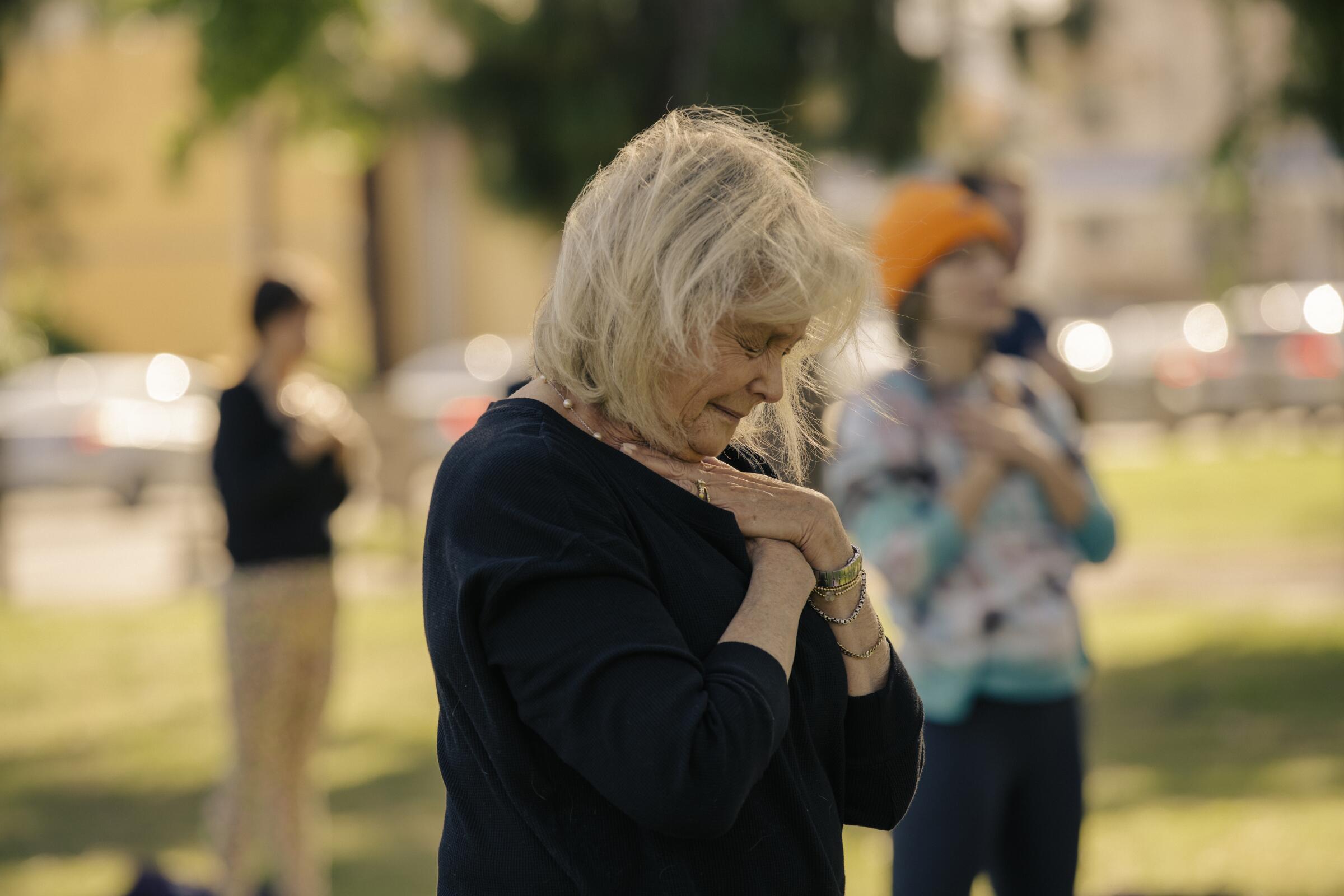
Growing up in Texas, Paul Denniston wasn’t taught how to grieve.
There were just two ways his father and mother — a Baptist minister and a teacher in a Christian school — said you dealt with the pain of loss: You held it in or you put it in God’s hands.
That might seem to cover all the bases but it ignores the toll that suppressed feelings take on our bodies — something Denniston addresses in his new book about the practice of what he calls Grief Yoga, “Healing Through Yoga: Transform Loss Into Empowerment.”
“My parents felt showing sadness was a sign of weakness or a lack of faith,” he explains in a recent interview, “but all I saw was how bottling it up leads to explosive anger and depression and guilt. It was frightening to witness.”
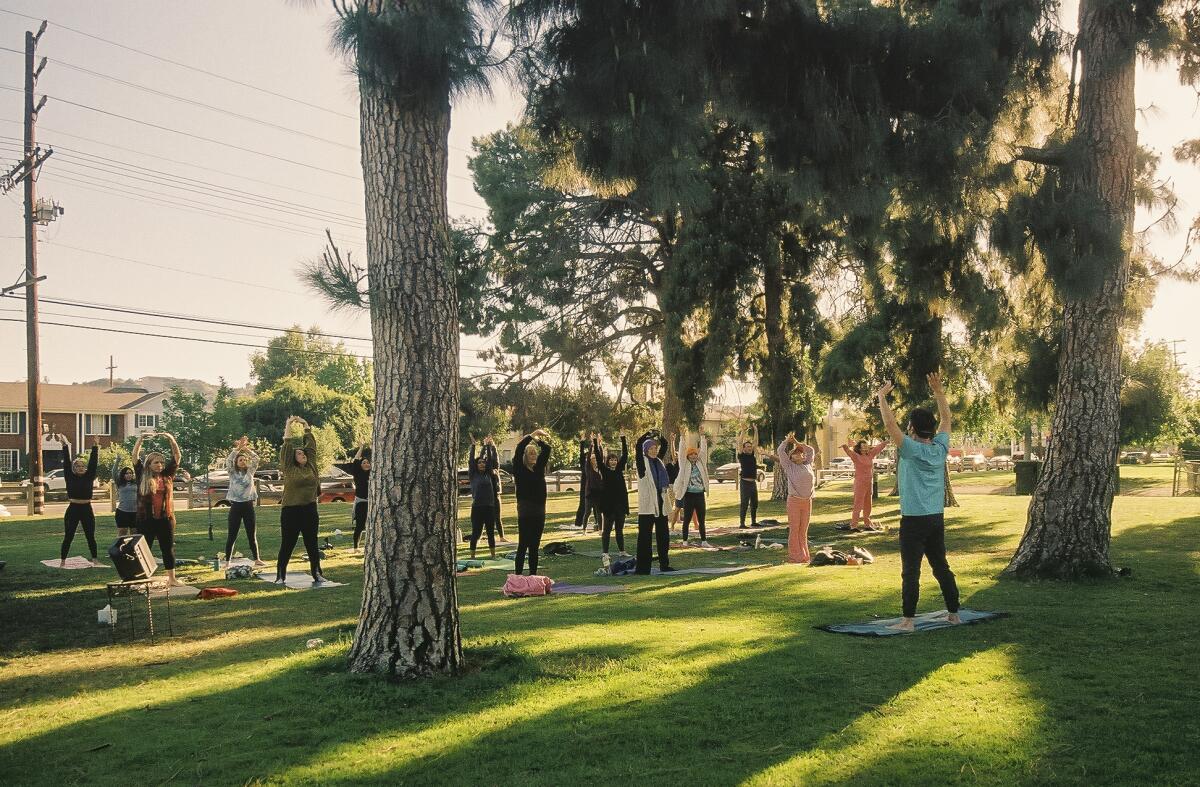
On a recent afternoon in Studio City, the L.A. resident took a group through a series of poses, movements and sounds (he also uses exercises involving laughter and guttural roars to unlock trapped emotions). Dressed in loose exercise clothes, the lean 52-year-old was full of smiles and friendly encouragement as he guided the group through what he considers the four stages of healing: awareness, expression, connection and surrender.
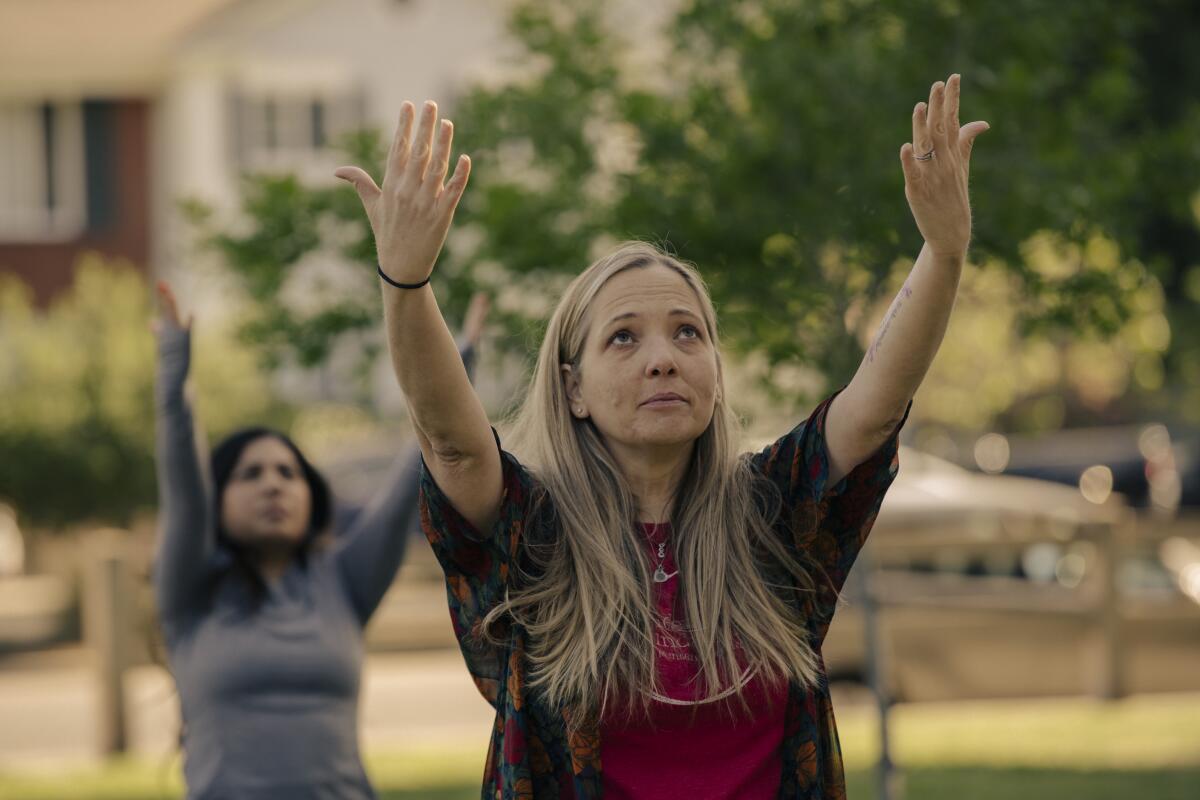
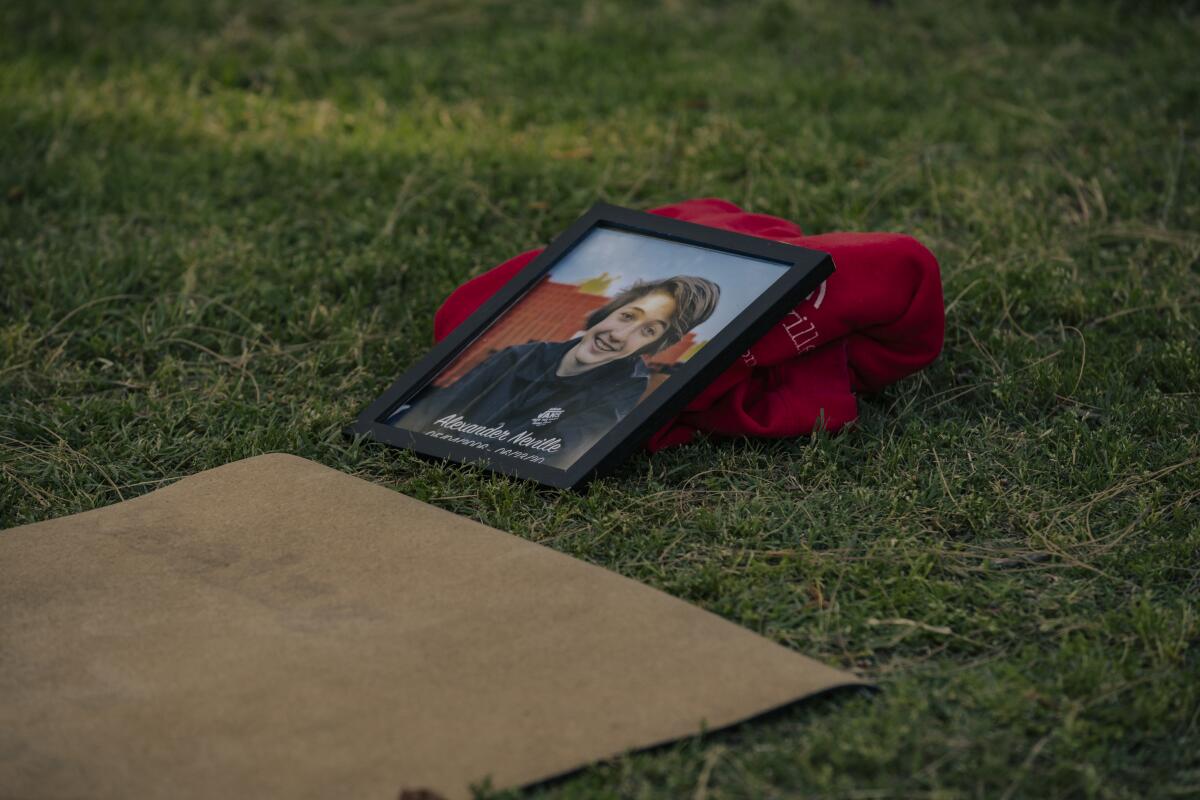
People grieve for many reasons, Denniston says. When a relationship or marriage ends, or we lose a job (and our sense of purpose with it), or a global pandemic robs us of our sense of connection with others, the result is a painful loss that “demands expression, and once you release it, you can open yourself to a deeper, meaningful transformation. That’s what I hope my practice and this book will help people understand.”
While he’s hardly the first to apply yoga to grief, Denniston has drawn from many types of yoga — including Hatha, Vinyasa and Kundalini — to create an integrated practice he teaches in workshops in Los Angeles and online. He also teaches the Grief Yoga practice with grief expert David Kessler all over the country.
Try the following exercises to better understand what Grief Yoga is and isn’t.
The coronavirus pandemic, wintertime, the daily stressors of life — it all can take a toll on our mental health. Here are some resources to help you understand therapy, how to find a therapist and more.
Grief Yoga begins with awareness. Some common grief tension spots are in the jaw, back and shoulders. “Society doesn’t really want us to talk about our grief too much,” Denniston explains. “We’re expected to get over it or just quietly carry it around.” Our bodies reflect that expectation by making our jaws tight and our shoulders hurt.
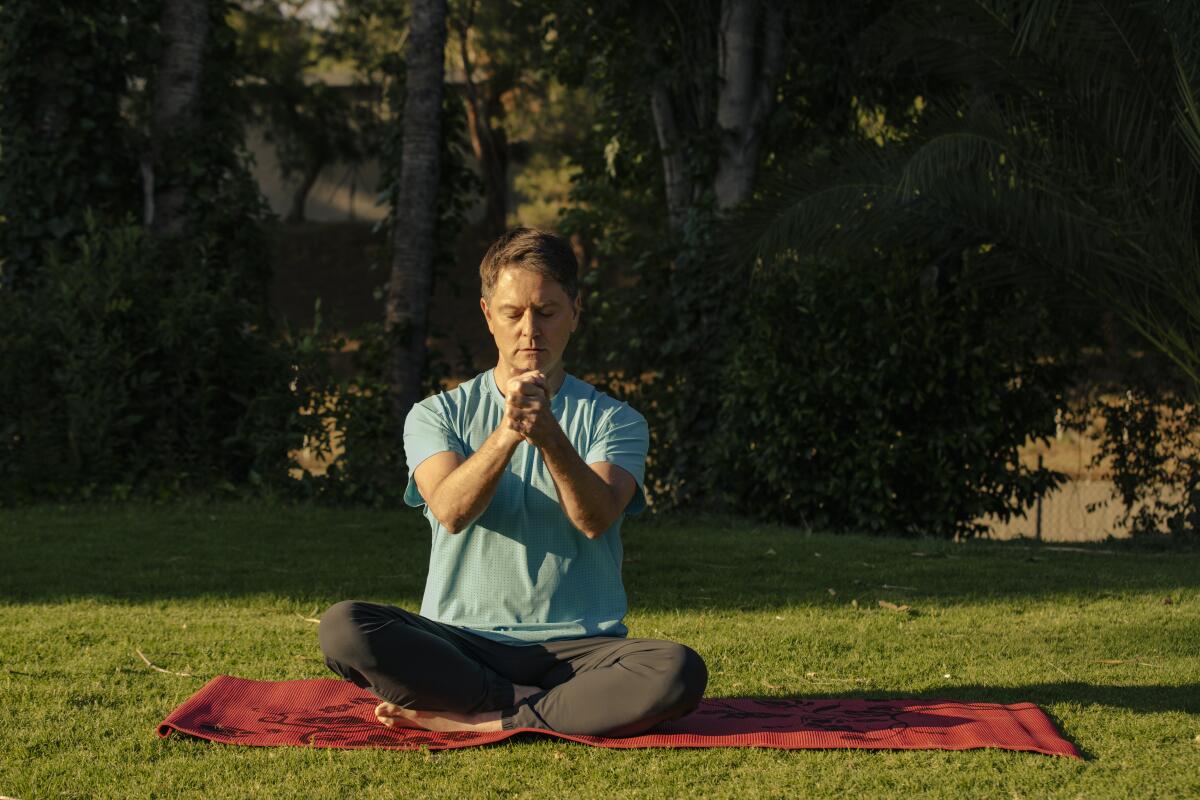
To release your jaw, sit with your hands clasped in front of your chest; as you slowly inhale and exhale, shake your hands back and forth like you’re going to roll a pair of dice and feel your jaw move and soften. Then, as you continue the same breathing pattern, make some simple neck rotations and tense and relax the shoulders to loosen them.
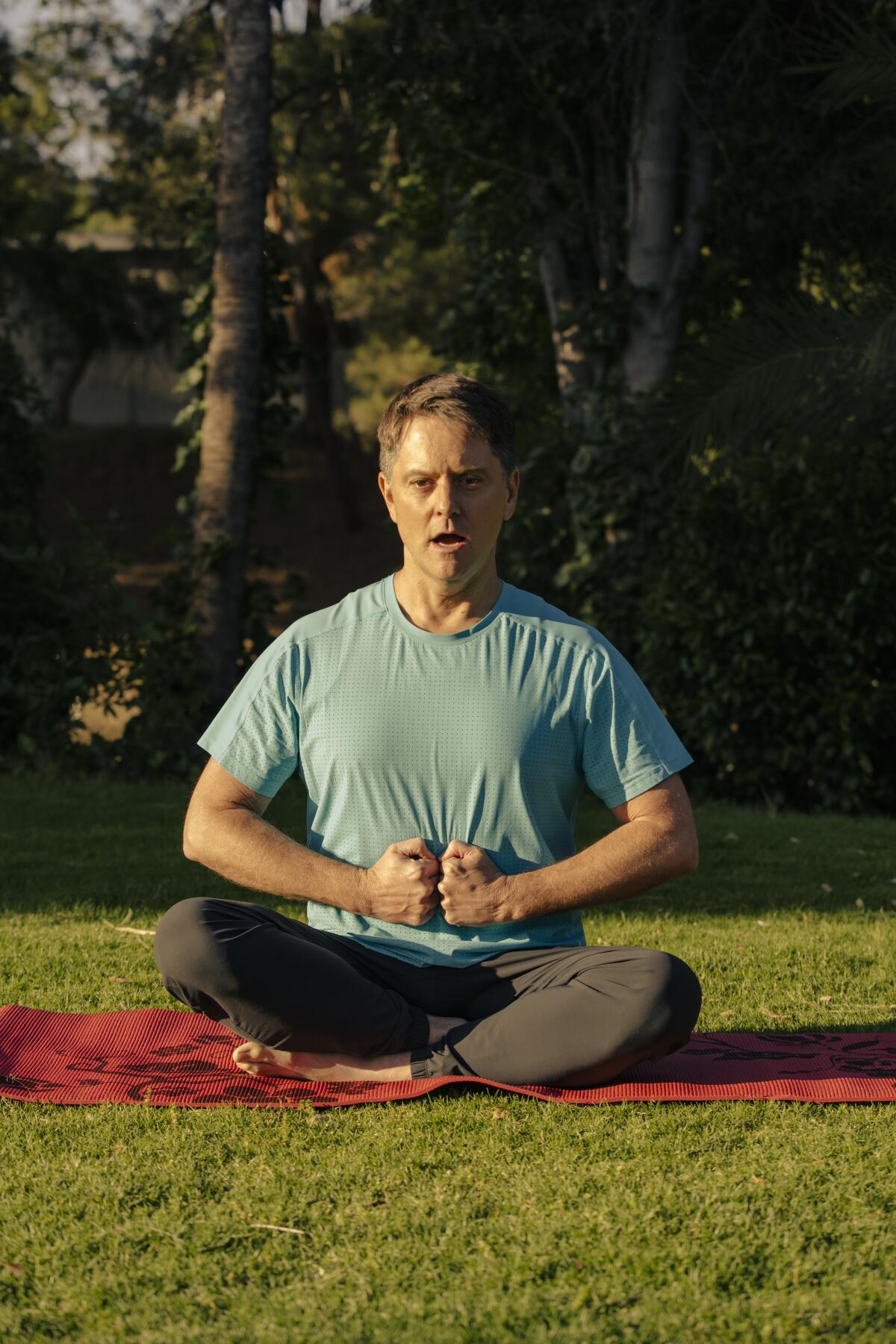
Denniston’s session in the park looked like any other outdoor exercise class until everyone suddenly erupted with a loud “ha!” that made heads turn. Vocalization is important, Denniston says. Trapped emotions need an exit. A movement like the “cannon breath” helps to get them out even if we don’t clearly understand them at the time. “The point,” he explains, “is to just get them moving.”
In a comfortable seated position, bring your fists to your belly. Inhale three quick breaths through your nose and fill your diaphragm with air. Then exhale forcefully through your mouth. As you do this, voice a loud “ha!” and push your palms in toward your navel to clear out any stale oxygen and open your throat. Continue this sequence for one minute. This exercise works in two ways: The quick inhales force the spine to lengthen and straighten, and the powerful exhales create a heavy sigh, releasing any stored-up emotions.
An early draft of Denniston’s book — which he started as a way of coping with the 2017 loss of his sister to cancer — didn’t get much traction with publishers. But that all changed in March 2020. The pandemic created a major mental health crisis, and Denniston says publishers were eager to help people cope with its devastating effects. He suddenly found his book at the center of a bidding war..
Self-distancing took away our ability to connect in person, and Denniston says exercises like the “appreciation meditation” remind us that there is still goodness in our lives despite everything that’s happening in the world.
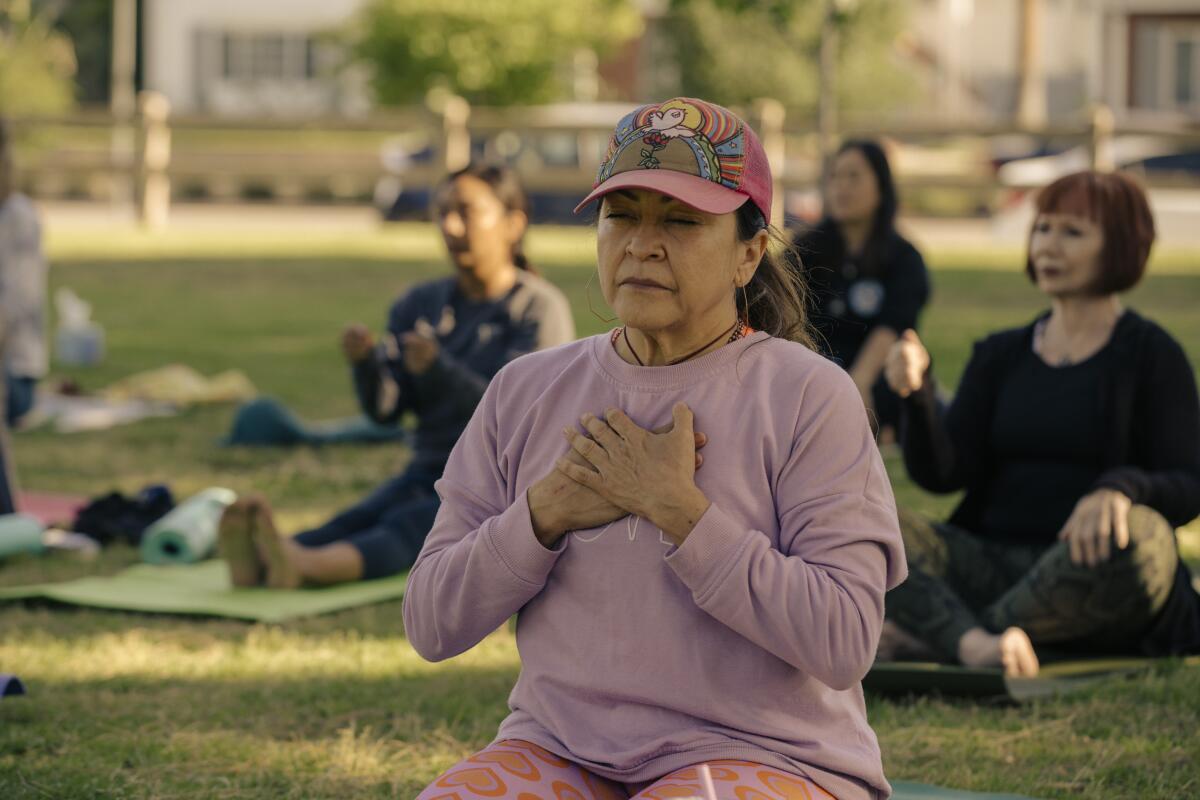
In a comfortable seated position, place your hands out in front of you, palms up, with your left hand gently sitting in your right, and close your eyes. Visualize a time, a moment or a relationship that you’re thankful for. Be specific and take time to visualize it in detail. Next, say “yes” to this memory and bring your hands to your heart and hold them there, gently saying “thank you.” When you’re ready, move your empty hands out in front of you again, palms up, and wait for another memory to surface. Continue at your own pace for three to five minutes.
Mindfulness reduces stress and improves brain function. Here’s how to practice it in the car while stuck in bumper-to-bumper traffic.
Grief Yoga isn’t about blowing off steam as you would in a gym workout. “It’s less about physical flexibility than it is about emotional liberation,” Denniston says. In the fourth stage, surrender, he has students use the sphinx pose to help them acknowledge their pain while recognizing their strength and resilience.
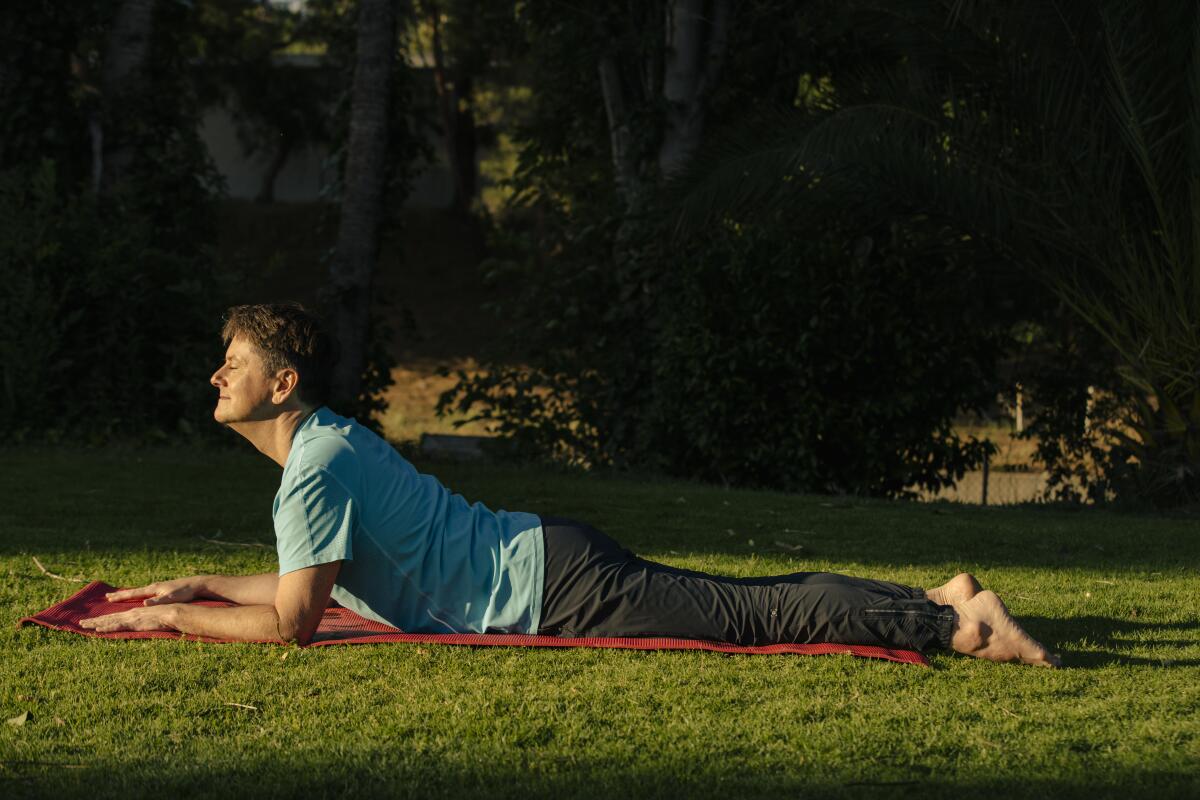
Lie down on your abdomen with your body prone along the mat. Lift your chest and hold it up by drawing your elbows under your shoulders. Press your forearms and palms down flat and relax your shoulders; pull your shoulders back and press your sternum forward. Embody the posture of a sphinx. In this pose, breathe deeply and open your heart. Think of all the loving connections in your life and connect with hope for love and better days to come.
Young people are experiencing an alarming increase in mental health challenges, the U.S. surgeon general has said. Here’s what you should know.
Denniston says he never dreamed he’d create a special practice; he was just looking for a way to cope with loss that had plunged him into depression and addiction. He soon realized he wanted to help others.
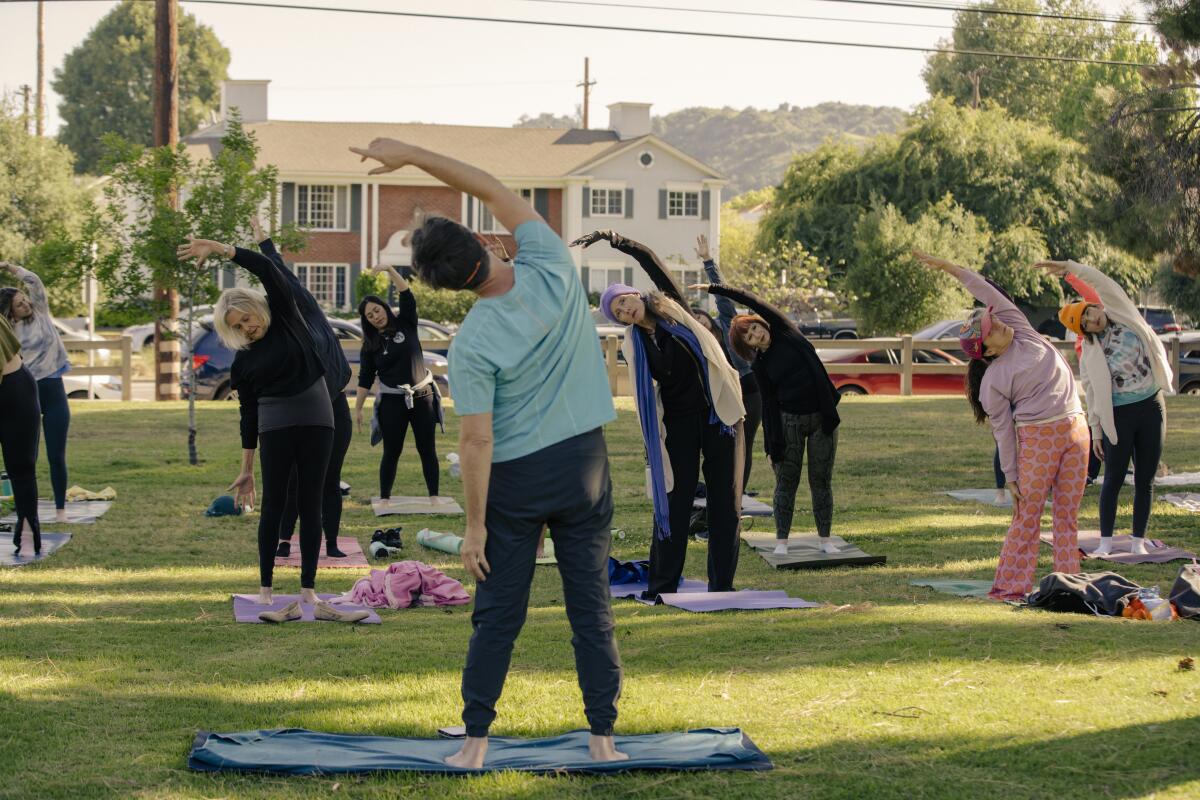
“I knew how much yoga was benefiting me, and I realized an important lesson: We’re always going to be thrown into difficult situations, and we have to learn how to move through them. Pain and loss are inevitable parts of being alive,” Denniston says.
Nick Owchar is executive director of advancement communications at Claremont Graduate University. He blogs at www.impressiveco.com.
Sign up for The Wild
We’ll help you find the best places to hike, bike and run, as well as the perfect silent spots for meditation and yoga.
You may occasionally receive promotional content from the Los Angeles Times.